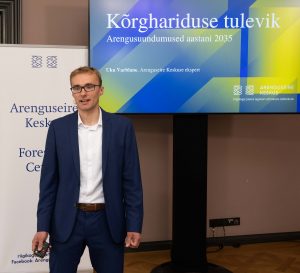Ukrainian refugees from the war have integrated in the labour market in Estonia more successfully than they have in those in other countries, but there remains room for improvement in matching the qualifications of those arriving from Ukraine with appropriate jobs concludes a report published today by the Foresight Centre on how Ukrainian refugees have affected employment and the economy.
News
Experts see digitised cell line development as one of six key deep technologies for Estonia, with a breakthrough expected within the next twenty years. Estonia’s possibilities in this field are mainly linked to pharmaceutical development and personalised medicine, shows the Foresight Centre in its recent brief report “Digitised Cell Line Development: State of Play and Prospects”.
The need for chips will skyrocket in the coming decade and experts are seeing opportunities opening up for Estonian businesses in chip design and verification and the testing of the security of chips, the brief report “Embedded Systems and Chip Technologies: The State of Play and Prospects” by the Foresight Centre reveals.
In order to enhance the competitiveness of Estonian economy and ensure sustainable development, we need to increase our investments into developing green technologies. Estonia’s weak point is that the state support for research and development in local businesses is inadequate and erratic, shows the Foresight Centre report “Green Transition Trends and Scenarios in Estonia”.
Wood-based bio-products could come to replace oil-based ones, and Estonia has a strong economic potential in bio-refining, both in the stage of research and development as well as production, says the Foresight Centre brief report “Biorefining Wood: Today and in the Future”.
Producing and consuming cultured meat could dramatically reduce the environmental footprint of food production and help improve public health. The research and development linked to the production of meat substitutes offers a massive economic opportunity for Estonia, says Foresight Centre in its brief report “Cultured Meat and Other Meat Substitutes: Today and in the Future”.
According to the Foresight Centre report “Long-term Impact of the Russo-Ukrainian War on Estonia. Population, Integration, Foreign Trade”, which was published today, Estonia must take into account that many war refugees will remain in Estonia for an indefinite time. The Centre drew up scenarios about 10,000, 30,000 and 60,000 war refugees remaining in Estonia.
Completely ending import of Russian and Belarus goods would have the greatest impact on the logistics, metal, and wood industries, where the replacement goods from other countries are more than 25% more expensive, shows the Foresight Centre brief report “Impact of ending import from Russia and Belarus on economic sectors”. Reshaping supply chains would increase costs for businesses and require keeping larger stocks to ground the risks.
Estonian businesses who depend on the goods and raw materials imported from Russia and Belarus should ground their business risks in good time, shows the Foresight Centre brief report “Impact of replacing imports from Russia and Belarus across categories of goods”. Completely ending import from these countries would entail a EUR 860 million additional cost to Estonian businesses in 2021 prices.
In order to remain competitive, higher education institutions will need to adapt faster to the needs of the education market, says the Foresight Centre Report “The Future of Higher Education. Development Trends until 2035”, published yesterday. In the next decade, the need for continuing education will increase significantly, which will require greater flexibility from higher education institutions and the state in regard to forms of study.

 An independent think tank at the Riigikogu
An independent think tank at the Riigikogu 




 Uku Varblane
Head of Research at Foresight Centre
Uku Varblane
Head of Research at Foresight Centre 


